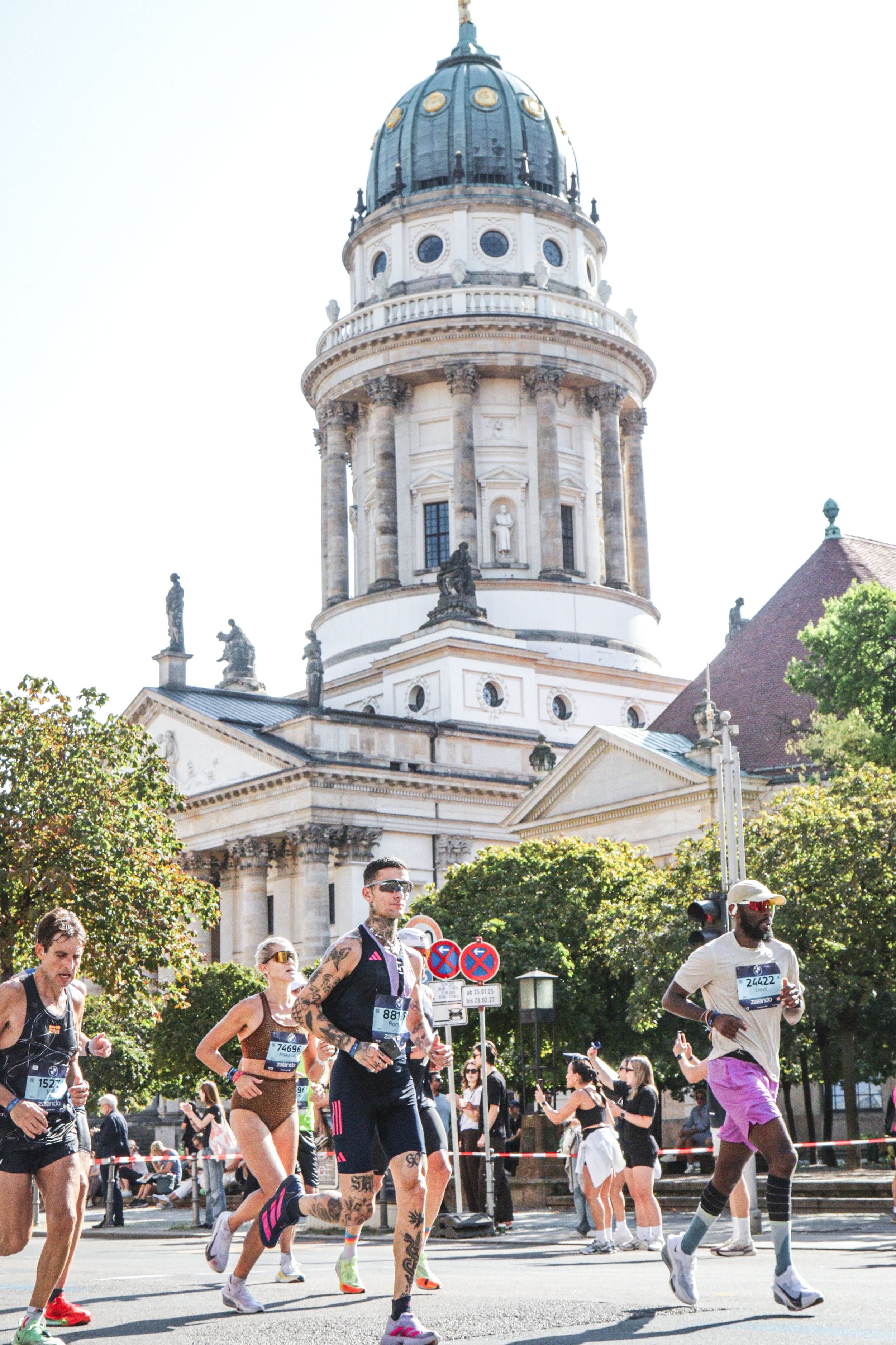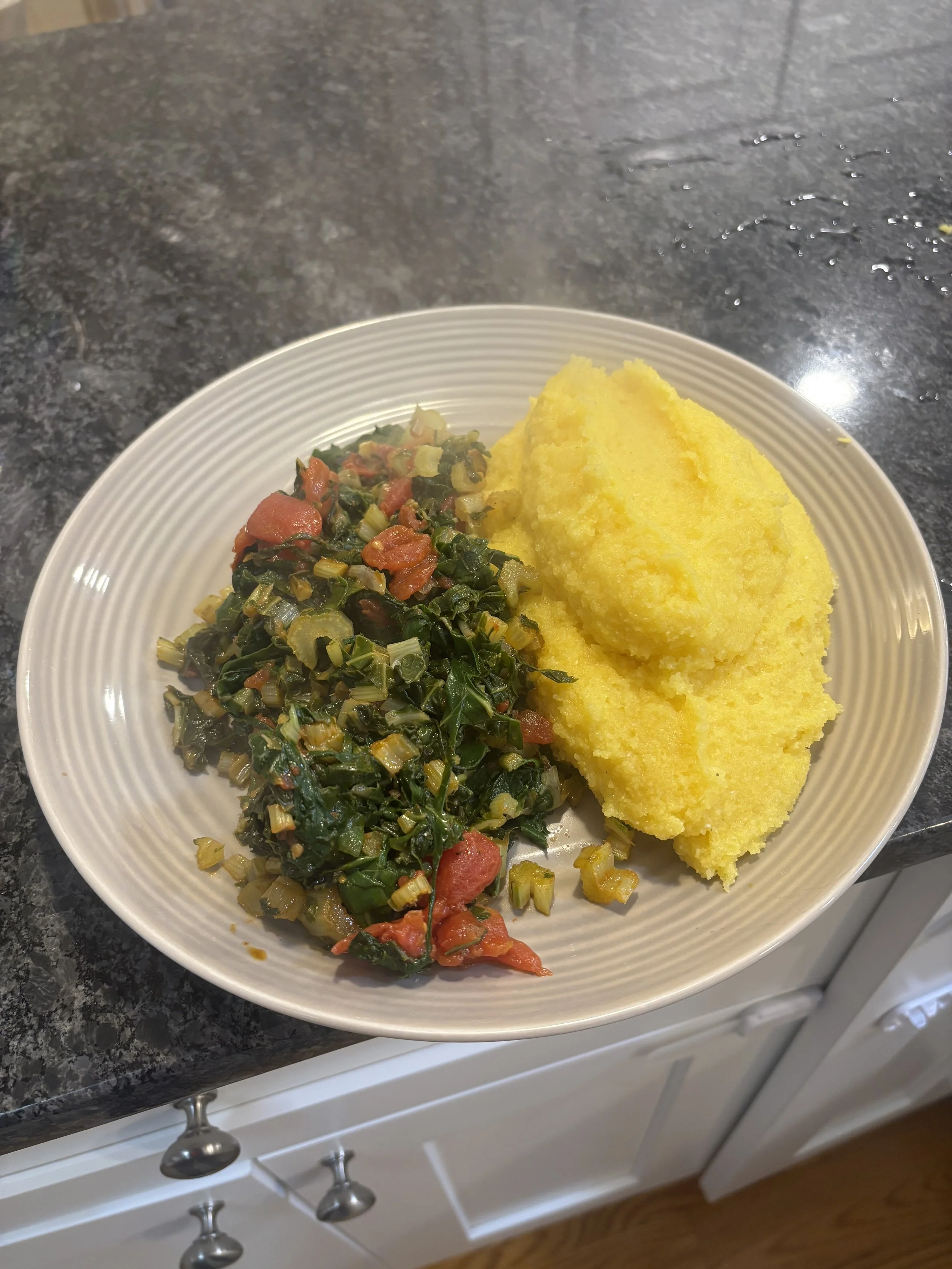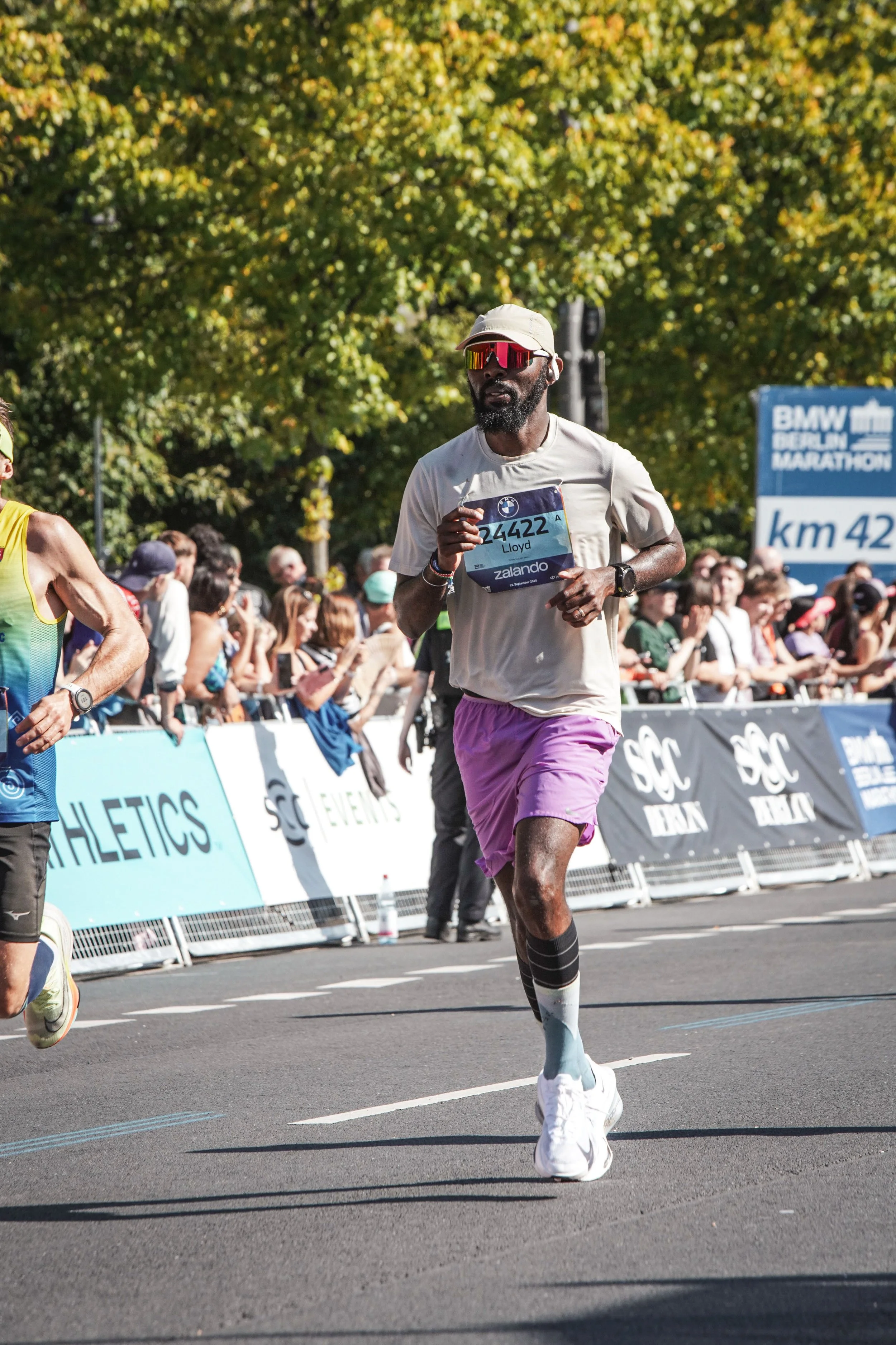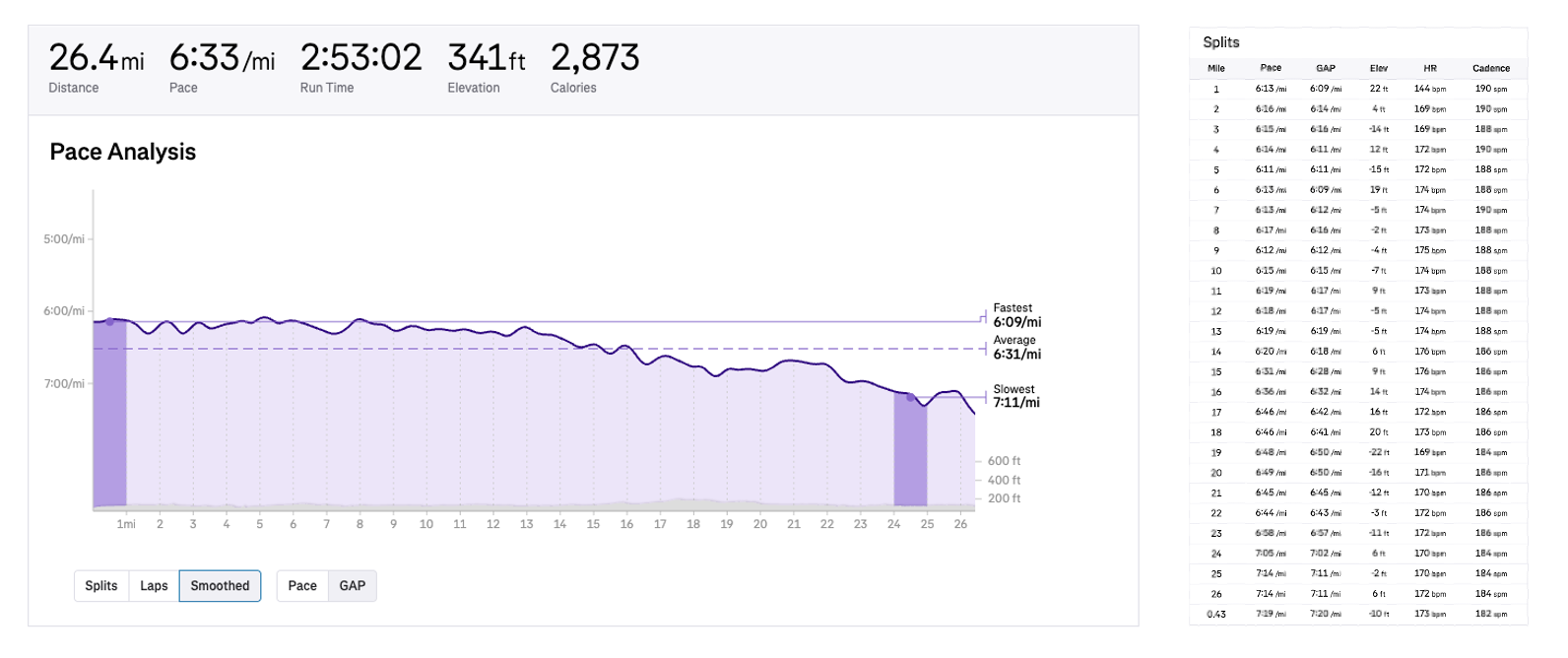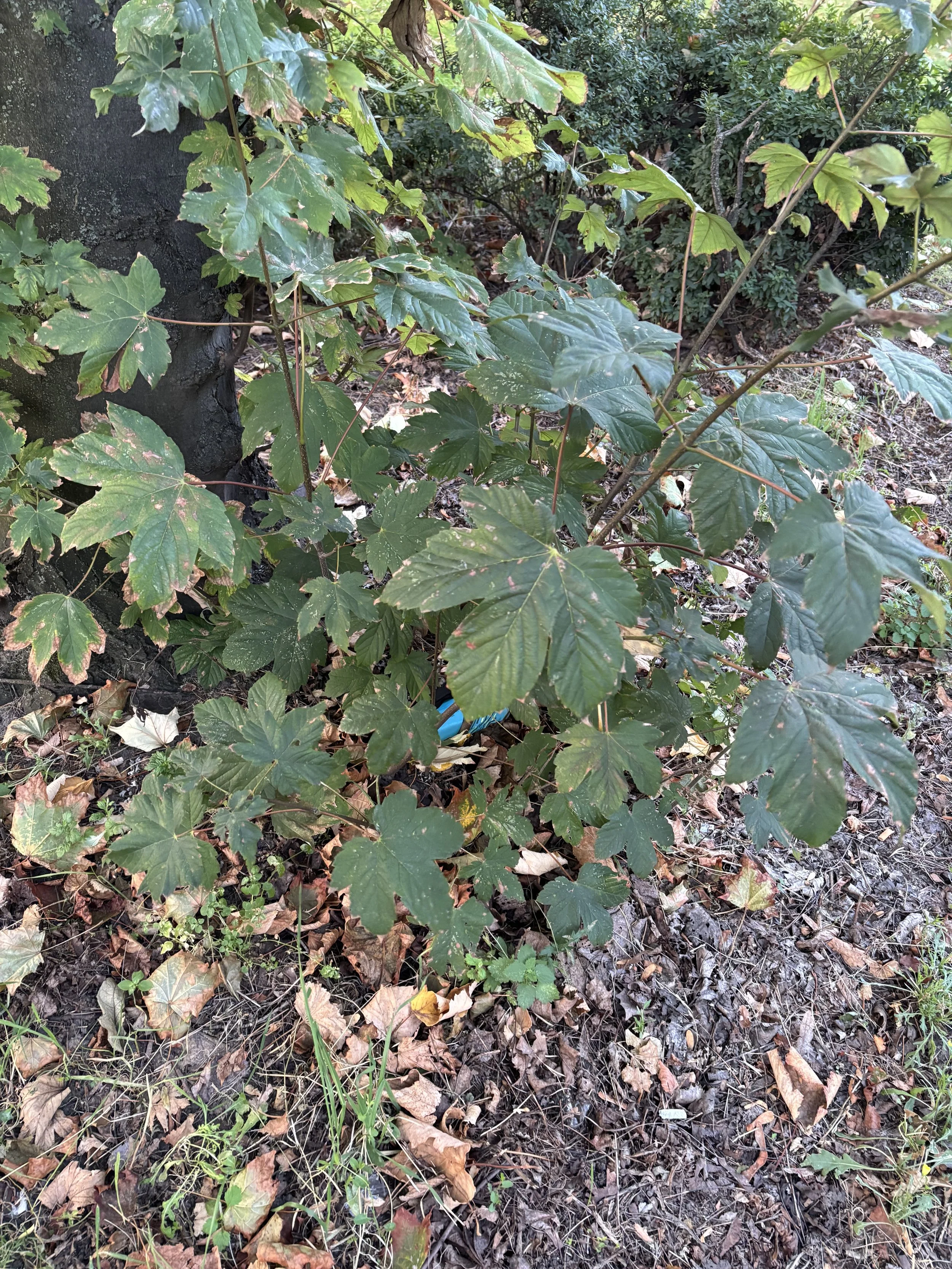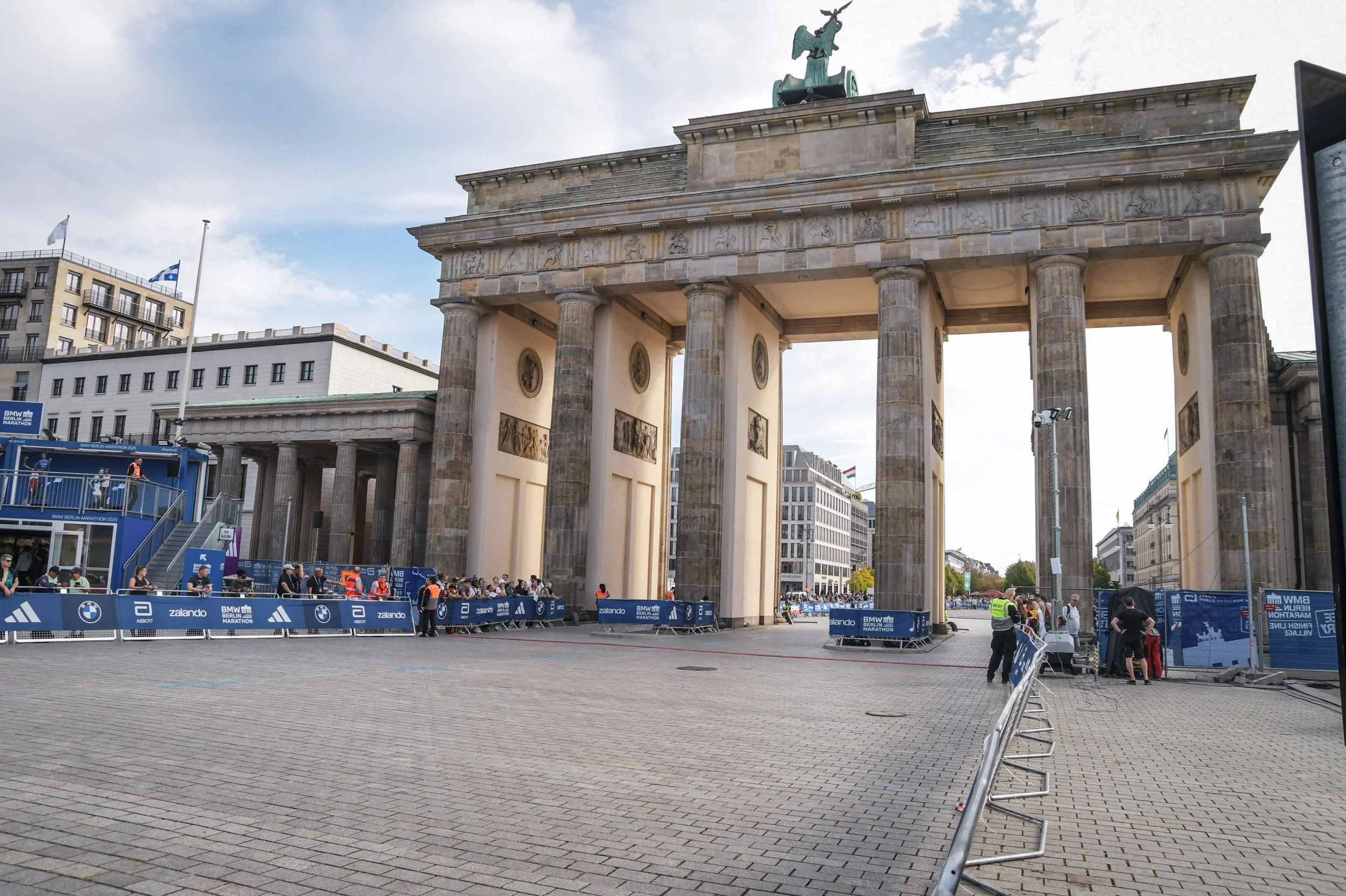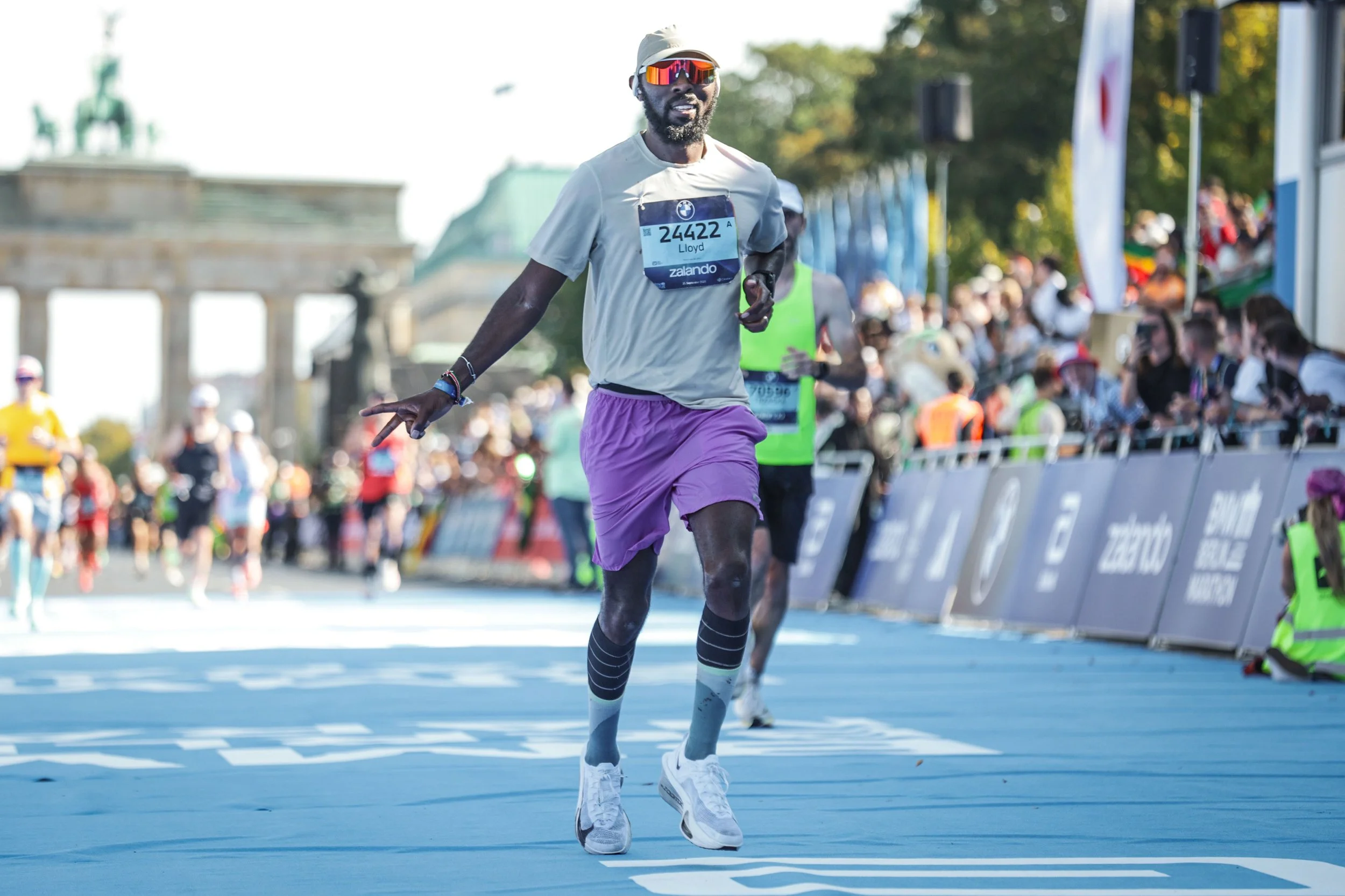Berlin Marathon ‘25 | Germany
Berlin 2025 (2:53)
The Day Before Race – Saturday September 20, 2025
Carboloading began Wednesday with my familiar ritual of sadza and Swiss chard for both lunch and dinner, repeated Thursday. On Friday afternoon, before heading to the airport, I ate sadza again. Since the overnight flight from Boston to Paris was only six hours, there was no real sleep to be had. Paris to Berlin added just ninety minutes. I consoled myself with the 8–10 hours of solid sleep I’d banked earlier in the week and kept eating through the flights.
Upon arrival in Berlin (the hotel was a quick 20 minutes from Brandenburg Airport by train. Everyone gets a free train ticket valid for 4 days they are in Berlin for the marathon), I checked in and refueled with croissants. Later, I went for a slow two-mile shakeout at the exact time the race would begin. The heat was unmistakable—75 degrees by 9 AM—and the next day promised similar conditions. I knew I’d need to positive split the race (not my preferred style): start quicker (6:10–6:20 pace) while the temperatures were still “low” at 71 degrees, then fade later. By how much, I couldn’t tell, but I was prepared to let the weather and my heart rate dictate pace.
Carboloading ritual with Sadza and Swiss Chard (started this ritual after training with the Kenyans)
After the shakeout, I took a 30-minute nap before heading to bib pickup at Messe Berlin (thirty minutes by train). The expo was efficient, with endless food stalls; I stuck to rice, vegetables, and tofu. While eating and wandering around town, I kept drinking Roctane loaded with salts in preparation for a hot day. I also bought new sunglasses, since the sun always makes me feel hotter. On the way back, I stocked up on brioche bread, bananas, and water before returning to the hotel. I was in bed by 5 PM and woke up at 6 AM the next day.
Race Day – Sunday September 21, 2025
Tiergarten
Berlin is impeccably organized. Public transport delivers you straight to the start. Lesson for next time: no need to arrive early. Thirty minutes is plenty—better to sleep longer at the hotel. Bathrooms? Not an issue. Europeans used the Tiergarten woods freely, men and women alike. It was my first time seeing such nonchalance at a race—refreshing, if surprising.
The race started promptly at 9:15 AM for group A. The temperature was already 70°F (feels like 71°F), with 84% humidity and a 7-mph wind from the south. A bad forecast to start with. The packed course didn’t help; I could feel the heat radiating off thousands of bodies. Every breeze felt like a blessing. Running tangents by following the blue line was nearly impossible until mile 8 or 9, with constant dodging and weaving in the first 10 miles. My Garmin read 26.43 miles by the end—an epic failure in tangent running.
Running Tangents (following the blue line) was Difficult
Blue Line
Berlin wasn’t my goal race. It was a celebration run, a long run workout at the end of my first six-week CIM training endurance block (race day: December 7, 2025). Three more training blocks await: endurance + threshold, race-specific sharpening, and taper. My wife had insisted: “You’ve missed Berlin twice already. You’re fit enough. Just go, enjoy it, and treat it as a long run.” So, I did—flying across the Atlantic for what was essentially a glorified training long run on a hot day. Happy wife, happy life.
Fitness-wise, I wasn’t at my sharpest, and I knew it. In past CIM cycles, my VO₂ max peaked at 64–65; in Berlin, it was 60, since I hadn’t yet done VO₂ max work this block. Add to that hip arthroscopy in December 2024 (I was not running for 3 months!), and simply finishing was a victory. I ran with gratitude—celebrating the fact that I could still run at all. That mindset carried me calmly through the usual dark miles, 23–25.
Passing the 42km marker
The plan was straightforward: start around 6:20 pace and see what happened. By mile 8 or 9, I knew I had to slow down to survive. I kept my heart rate steady as the temperature rose, letting pace be the only variable. My splits slipped from 6:10 to 7:10 as the sun climbed. By the finish, the temperature had risen to 81°F, with 66% humidity and a 9 mph SSW wind—eleven degrees hotter than at the start.
Final time: 2:53 (6:33 pace)—exactly what a long run should be at this stage of training.
Keeping Heart Rate Constant as Temps Increased
Nutrition
My fueling followed a familiar pattern:
Three hours before: sipping Roctane until one hour pre-race.
Thirty minutes before: ketone shot with 100 mg caffeine.
Start to mile 7.7: sipping Maurten (100 mg caffeine, 300 calories).
At mile 7.7, I retrieved a bottle I had hidden earlier that morning near my hotel—easier than fighting through the chaos of official personal nutrition tables.
Hidden Handheld Maurten Nutrition at Mile 7.7
Mile 13: ketone shot without caffeine.
Mile 18: finished the hidden bottle. From then on, no Maurten, just occasional water. I tried to avoid water stations because they were slippery, staying farthest from the slick ground and discarded plastic cups.
Mile 22: last ketone shot with caffeine.
No GI issues, no bonking.
Final Thoughts
Berlin is flat, fast, and forgiving compared to Boston or CIM. The much-discussed “hill” at mile 16 felt more like a ripple in the road—I barely noticed it. With proper training and cooler weather, the course is PR material. I’m already planning to return on September 27, 2026, with a full training block to test how fast I can truly go.
Brandenburg Gate
But Berlin also carried lessons beyond the course. Climate change is reshaping marathon assumptions: “cool weather” races can no longer be trusted to stay cool. If I want to PR in the years ahead, I’ll need to train for heat, not just hope for coolee weather. Sauna sessions two weeks before race day—shown to expand plasma volume—may become as essential as speed work or long runs.
In the end, Berlin was not the masterpiece. It was the prelude: proof that after surgery, setbacks, and the weight of heat, I can still run somewhat strong. Eleven more weeks remain until CIM. The training continues….
Finishing with the Brandenburg Gate in the Background

